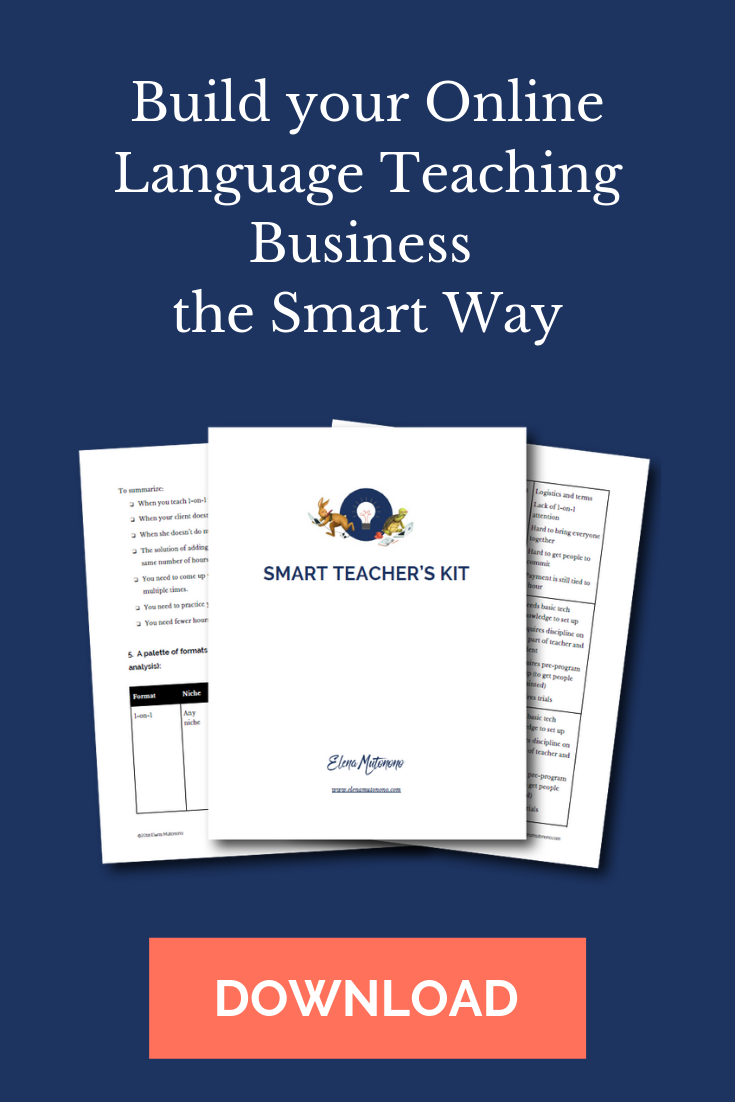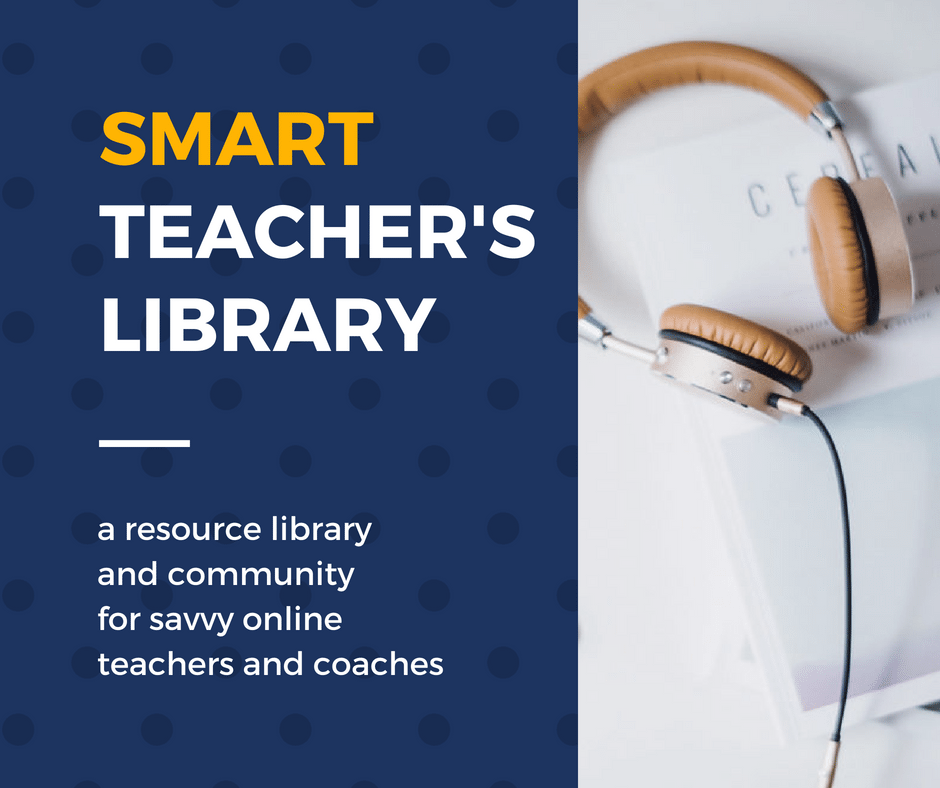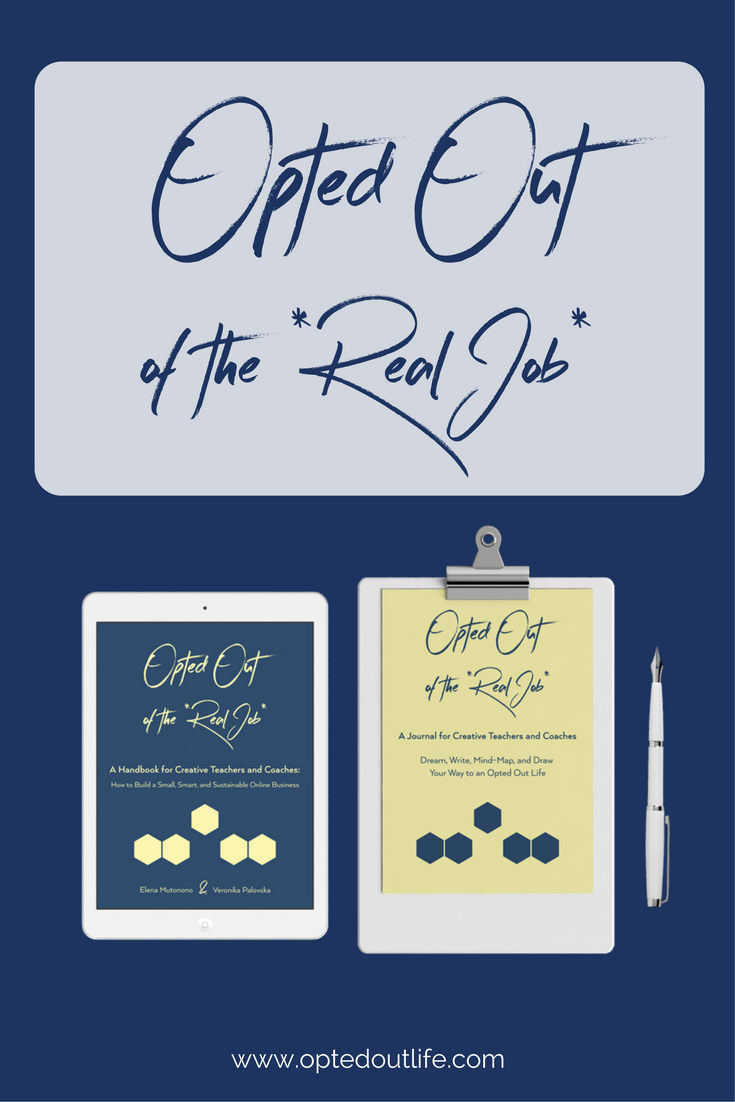Ermy Pedata teaches Italian online at The Language Rose (check out her Instagram account, too). Last year she made a smart move away from trading time for money, and in this interview she shares how the process went and what she learned as she challenged herself to work differently. Moving away from the 1:1 hustle and trying out different approaches is a brave and scary thing to do. Some things may not work out on the first try, and some things may need tweaking until they work. I’m happy to share Ermy’s story with you and hope it will inspire you to change a few things in your work as well!
About Ermy:

Ermy Pedata is a certified language coach who helps lifelong-learners with a free spirit to overcome their fear of speaking Italian and connect with the Italian world (regardless of where they live) through creativity, art and play. You can play “Being Italian” with Ermy over at The Language Rose Learning Club.
Where were you in your business 1 year ago?
This time one year ago I was experimenting with different things, I was literally throwing spaghetti at the wall to see what got stuck. At the same time, I was hustling and felt I was always short of time, so I was not really taking the time to reflect and notice… where the spaghetti were actually sticking.
I thought I had a niche, but what I had was just many ideas that I was struggling to fit under one umbrella. I was spinning different plates. On the one hand, this was good because I was experimenting, but on the other hand, I lacked clarity and strategy which often led to overwhelm.
What prompted you to seek out a different way of teaching online?
I realised that my time was limited and as an entrepreneur (or teacherpreneur) time is the most valuable asset I ever have. I needed to stop trading just my time for money, not only for myself but, above all, for my students, so I could have a bigger impact on them.
Here is why: for a long time, as a language learner myself, I’ve known that my learning doesn’t happen *only* during the time I spend with my teacher, face to face. Actually, most of my learning happens outside of the “classroom” (either virtual or physical). My learning happens the most when I have time to internalise and practise what I’ve learned with my teacher.
However, this was something that most of the students’ that came to me hadn’t realised yet. Most students came to me thinking that their only time to learn was when I was there present with them in a lesson. As a coach, I had to guide them to realise that this wasn’t true.
Plus, it was also slowing them down in the process of learning to speak the language they love. I had to help them realise they could not only learn when they were with me, but also (and especially!) during the time on their own by internalising, practising, reflecting and… being creative with the language.
This belief had been in me for a while but it had been hard to communicate in a way that was compelling to my students… which contributed to my insecurity. I was wondering whether I was right or not. Whether I was the only teacher to think this (especially when everyone around you keeps offering only one to one classes, day in day out).
When I attended Elena’s workshop One to Infinity, I felt relieved hearing her talking about this exact same thing (students learning not only with the teacher but, especially in their own time)… and I didn’t feel alone anymore!
***
Want to learn how to work less and make more by changing the way you teach languages online. Here’s an invitation to my workshop.
What was the most difficult first step once you decided to apply smart teaching strategies?
The most challenging part was that I had to reinvent my way of teaching by going back to my experience as a learner, while also reflecting on my experience as a teacher. In August last year, I started trying asynchronous learning as an experiment and created my first asynchronous program. The student I tried it with for four weeks said this: “I did more work on my language learning now than when we were meeting weekly.”
She had only seen me once over those four weeks. This was a turning point for me, because I had just received a confirmation that what I was working towards was not an airy fairy vision but a reality soon to come true, that would bring more value and progress to my students.
Can you share some of your wins?
The fact of having found a new way of sharing my passion for languages and teaching my students in a more time efficient and effective way is a massive win already. I have been working on creating language learning programs that allow students to actually take time not only to learn but also internalise and practice what they learn asynchronously and, more importantly, creatively. This means they don’t need me to be omnipresent, but they are more independent and empowered learners who take ownership of their learning process…
After having experimented with the asynchronous format, I decided to put together an asynchronous programme called Sing & Speak Italian. This programme was an adaptation of a face to face workshop which, due to last year’s pandemic, I couldn’t do anymore. Up to that point I had had no idea how to transfer the concept of that workshop online.
Following Elena’s strategy, I turned it into a short asynchronous programme. I had about 13 people joining the free workshop where I demonstrated how the programme worked and what I thought was going to be a crazy experiment, revealed to be one of my best teaching experiences of the year. And the most awesome thing is that participants really enjoyed going through the programme and I look forward to relaunching the programme soon!
What are some things you’re working on currently, both to do with your mindset and your business growth?
Having a niche is not optional, as Elena always says, and I really agree with this. This is why I took a few weeks off in December last year to do some “soul searching” and really try to figure out my core message and niche (a real one!). I wanted to figure out what’s the one thing I’d really like to teach related to Italian and what I’d like my students to experience.
What Elena said in our coaching call (“your ideal client will probably have something in common with you”) and the chapter of her books ( as well as blog posts and videos) on niche finding helped me a lot in this process. Although it wasn’t easy and it’s still a work in progress, I feel I have now something compelling that I’d like to communicate to the world and my prospective students.
When teachers hear the sentiment about working less they feel like it’s not for them. After all, they *love* working with people. For you, what is the incentive for working less?
First, I want to say that I hear these teachers. I used to think the same, until… I’ve realised that working more and just doing work one to one is, actually, not only more damaging to you but also to your students in the long term! This may sound harsh but here’s what I mean: I know you love your students, you want them to actually learn to speak the language, you want them to actually make progress… so the best gift you can give them is their freedom from you by letting them experience the language in their own time.
Let them get their hands dirty (or rather, their “tongue dirty”) by doing an asynchronous speaking or writing programme, let them figure things out on their own, let them feel the language —not just learn it! Be a guide on the side rather than a sage on the stage. Be a catalyst for change rather than just a tutor who instructs their students on grammar rules and vocabulary. You can do this only by freeing yourself up —and consequently your students will be set free too.
More tips:
- Ermy joined the workshop and then we met for a coaching session to discuss some questions she had. If you’re interested in coaching, you can request the catalog by contacting me here.
- Asynchronous programs may have different results on the first try. If things don’t work according to “plan,” try again. A lot of times what keeps us from succeeding is our own doubts.
- I wrote a series of emails on why asynchronous programs may not work. They’re here.
- If you need help and inspiration on this journey, check out my podcast, my Flowers in the Frost book and the Smart Teacher’s Library.


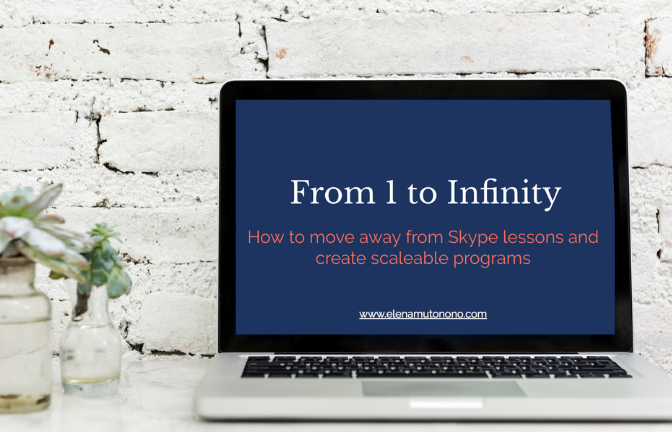
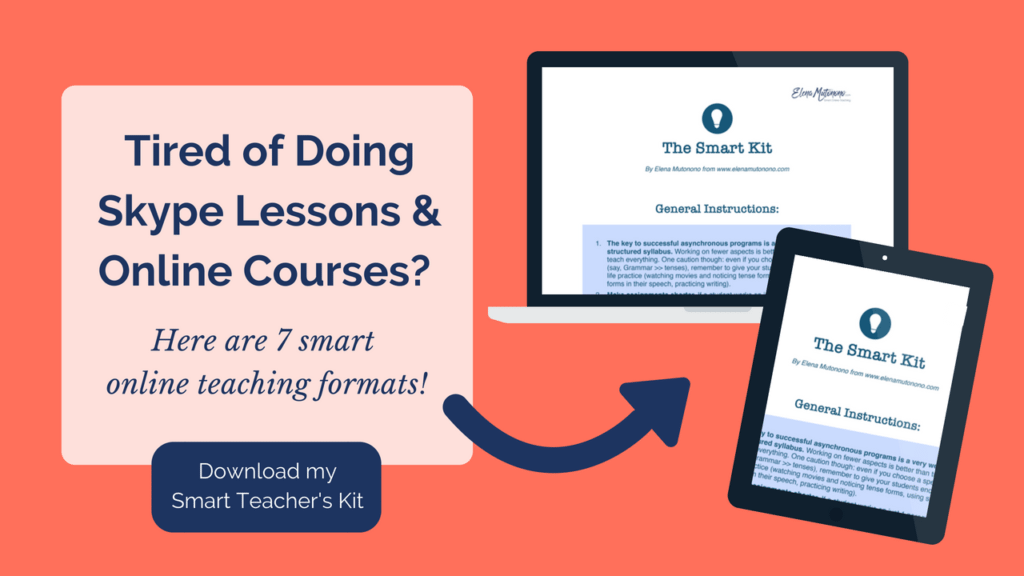
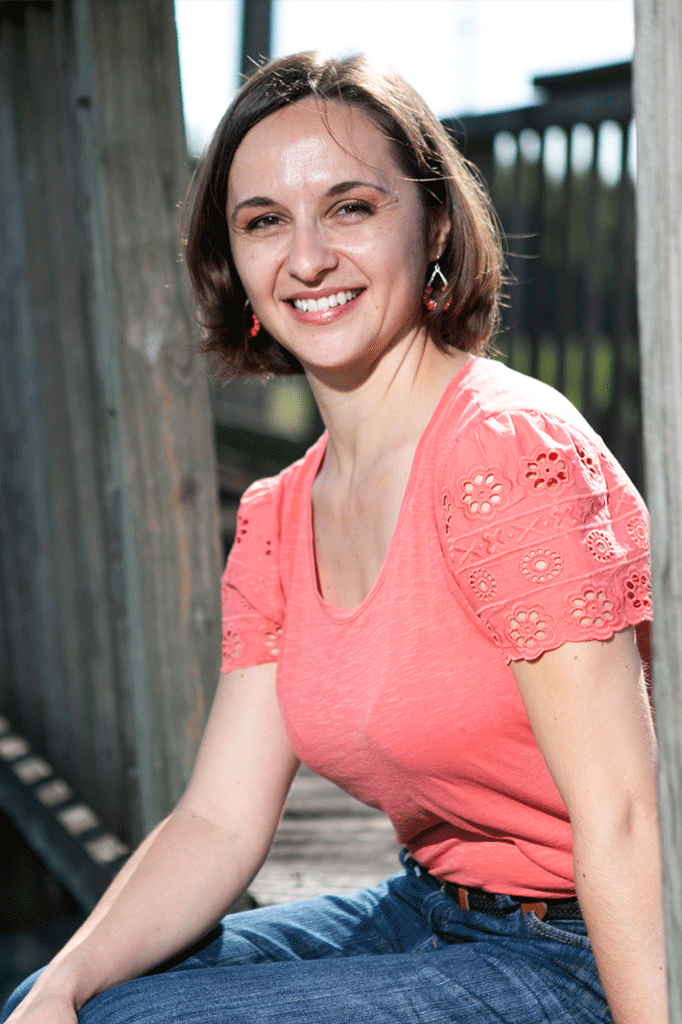 Welcome to my nook where *Big Magic* happens. My name is Elena Mutonono, I help small business owners package their services as digital products and sell them online. I want you to work smarter, not harder. Increase your impact beyond your current face-to-face clients. Grow your business as you reach more people all over the world.
Welcome to my nook where *Big Magic* happens. My name is Elena Mutonono, I help small business owners package their services as digital products and sell them online. I want you to work smarter, not harder. Increase your impact beyond your current face-to-face clients. Grow your business as you reach more people all over the world.
